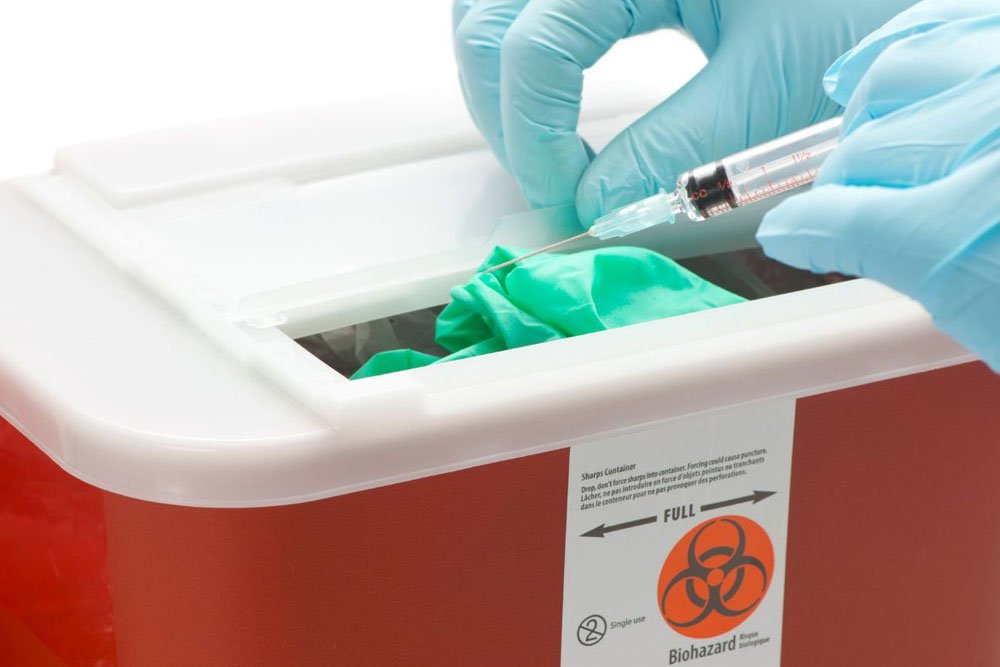One of the most important aspects of managing healthcare and safeguarding the environment is how medical waste is disposed of. If handled and disposed of improperly, medical waste, which includes items like spent needles, infected gloves, and harmful waste, poses serious threats to the environment and the general public’s health. This article will look at five convincing justifications for the necessity of disposing of medical waste responsibly and safely.
1. Infection Control
One of the key motivations for properly discarding medical waste is infection control. Pathogens, including viruses, fungi, and bacteria that may cause a variety of ailments, are frequently found in medical waste. Without the proper safeguards, healthcare workers handling medical waste risk needlestick injuries or contact with contaminants, which might result in life-threatening illnesses, including HIV, hepatitis, or TB. The danger of exposure to infectious pathogens is reduced by using proper disposal procedures, such as sealed containers and specialized disposal techniques.
Additionally, illnesses contracted via inappropriate medical waste treatment can spread across healthcare facilities, endangering patients and healthcare employees. Pathogens can accumulate on contaminated surfaces, tools, or materials, creating a continual risk for patients and employees.
2. Environmental Protection
If medical waste is not properly managed, it might harm the environment. Medical waste can pollute soil and water sources when disposed of improperly, such as at landfills or other unsanitary facilities. Risks to animal and human populations living close to these locations can result from infectious diseases and hazardous substances leaching the earth. Medical waste must be handled and disposed of according to established procedures that make it non-infectious and environmentally safe, and this is achieved through effective waste management solutions to safeguard the environment.
Beyond the immediate impact, inappropriate medical waste disposal, especially in regions like California, has long-term effects on the ecosystem. Long-term consequences, which influence ecosystems and natural resources, may last for years or even decades. Responsible waste management acts, such as medical waste disposal in California, are crucial to minimize these environmental dangers and guarantee the well-being of people and the world. These activities include trash segregation, effective confinement, and compliance with disposal standards.
3. Prevention of Contamination
Safe medical waste disposal aids in avoiding community and public space pollution. Medical waste may be dangerous to patients, sanitation workers, and the public if not properly separated, transported, or disposed of. Secure protection, labeling, and transport all help to lessen the possibility of contaminated products accidentally meeting people.
Reduced danger of secondary transmission is part of contamination prevention. When medical waste is not disposed of properly, it can act as a disease reservoir and cause epidemics. These epidemics have the potential to destabilize communities and tax healthcare systems and pose serious public health issues. Healthcare facilities play a critical role in reducing the spread of infectious diseases by promoting good medical waste disposal policies.
4. Legal Compliance
It is not only wise to abide by the rules governing medical waste disposal, but it is also required by law. Federal, state, and municipal authorities have created tight standards and laws to guarantee that medical waste is handled and disposed of safely. Healthcare facilities that disregard these rules risk fines, legal repercussions, and reputational harm.
To prevent the potential repercussions of non-compliance, legal compliance is essential. To make sure that medical waste disposal rules are followed, healthcare organizations may be the target of audits, inspections, and investigations. Significant monetary fines, legal action, and even a ban or revocation of licenses are all possible outcomes of violations. Compliance is crucial to prevent expensive legal disputes, maintain regulatory approval, and safeguard an institution’s brand.
5. Ethical Responsibility
Despite the legal and regulatory implications, healthcare practitioners have an ethical obligation to dispose of medical waste properly. Healthcare facilities are responsible for keeping patients, employees, and the public safe. Managing biohazard waste improperly may be considered a violation of this obligation.
Ethical issues include protecting patient privacy, reducing environmental harm, and encouraging good resource management. Access to sensitive patient data by healthcare practitioners is permitted, and patient confidentiality is protected by proper disposal. By implementing environmentally friendly waste disposal techniques and lowering waste creation, ethical obligation also extends to mitigating the environmental impact of healthcare activities.
Conclusion
Finally, it should be noted that the moral standing of healthcare, the public’s health, and the environment are all protected by the safe and responsible management of medical waste. To reduce risks, stop infections, and preserve their commitment to patient safety and environmental sustainability, healthcare facilities must prioritize implementing strict medical waste management procedures.
















